Prepare for Gravel Riding
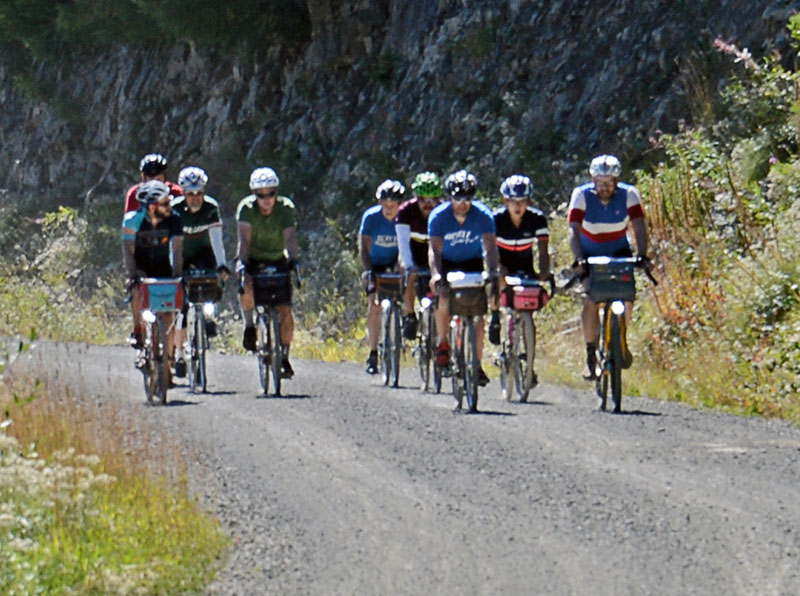
Gravel riding is becoming increasingly popular, and we are very happy about it! It was natural for Bicycle Quarterly to become a co-sponsor of the Eroica California ride in April, since it combines two things we love: gravel roads and classic bikes. But gravel riding isn’t limited to riders trying to recreate the glory days of mid-century racing – almost any bike shop in North America will have a selection of carbon fiber “gravel bikes”.
There are many reasons why cyclists have discovered gravel: Gravel roads see much less traffic than paved ones. Gravel roads often traverse magnificent scenery. And riding on gravel enhances the simple experience of cycling, as your bike slides a bit – whereas on pavement, a slide usually results in a crash. On gravel, you can play with the limits of adhesion. It’s fun.
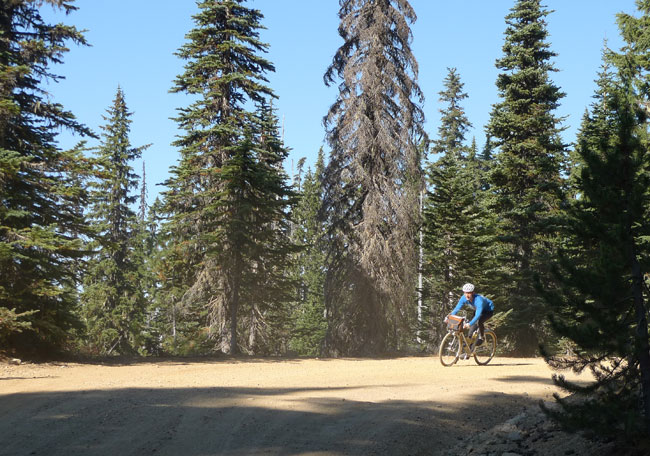
For more than a decade, Bicycle Quarterly has featured cycling on unpaved roads: dirt roads, gravel roads, even mountain paths. As people have become interested, they often ask us: “What do we need to ride on gravel?”
Here are some thoughts based on our experience of testing many different bikes on many different gravel roads.

Bike
Almost any bike can be ridden on gravel. When I was a college student, my friends and I rode our racing bikes through the forest – on 20 mm tires! Today, we call that “underbiking” – riding a bike that is only marginally suited to the environment where we ride. That can be fun for a short while, and it hones your skills, but in the long run, you’ll want a bike that is better suited to the task.
A good gravel bike combines the performance of a racing bike with the ability to use wide tires. If you have a choice, stay away from touring bikes and hybrids! Their stiff and heavy frames limit their performance. You’ll have more fun on a bike that offers a spirited ride and encourages you to go faster and further. Cyclocross bikes are great for gravel, as are the increasingly popular gravel bikes. A good randonneur bike with wide tires is an excellent choice as well. Classic racing bikes often have clearance for wider tires, too. On these bikes, you fly over the gravel, rather than grind through it.
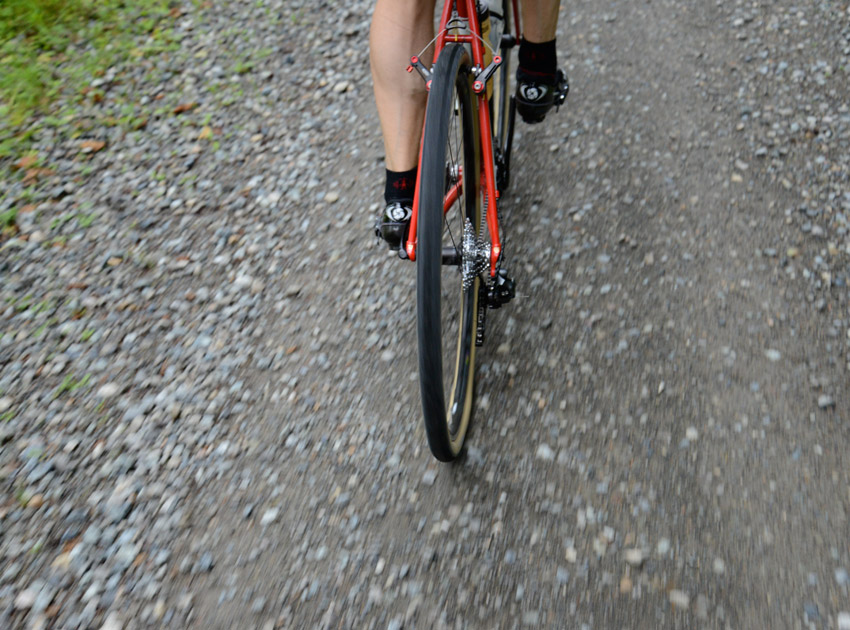
Knobs vs. Smooth Tires
Tires are the most important choice of your gravel bike. Contrary to what many cyclists expect, you don’t need knobs to ride on gravel. When you slide, it’s because the gravel layers slide against each other, not because your tires slide on top of the gravel. Knobbies don’t improve your traction. (Knobbies mostly give you an advantage on mud.) Most gravel rides include a fair amount of pavement, where knobbies roll slowly and corner unpredictably. That is why most gravel riders choose “road” tires with relatively smooth tread patterns.
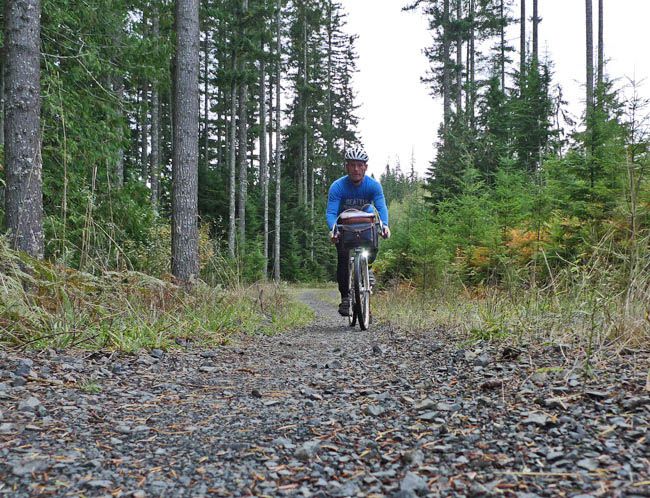
Tire Width
You want the widest tire you can fit on your bike. At Bicycle Quarterly, we’ve ridden tires between 20 and 54 mm wide on gravel. The verdict is clear: The widest tires are by far the fastest and most fun. Three reasons:
- When your bike bounces on the gravel, that energy is lost from the forward motion. (The technical term is called “suspension losses”.) The more your bike bounces and vibrates, the slower it is. With wider tires, you can run lower pressure, so your tires bounce much less. You get more speed and more comfort.
- The more rubber you have on the “road”, the more sure-footed your bike becomes. Your bike slides sideways in corners when the stones under your tires roll or slide. A wider tire spreads the cornering forces over more stones, so it’s less likely to slide.
- On soft surfaces, a narrow tire sinks into the gravel. Displacing gravel takes energy. (Imagine walking on a soft sandy beach or in deep snow. It’s hard!) The ideal tire leaves almost no track in the gravel, but just floats over it. (Imagine snowshoes. They distribute your weight, making hiking through deep snow easier.)
Your tire width is limited by the clearances of your bike’s frame and fork. Read this post about determining how wide a tire you can fit on your bike. And then use the widest tires that safely clear your frame.

Tire Choice
Many riders imagine that you need a reinforced tire for gravel, but that isn’t necessarily the case. On gravel, you are much less likely to get flats. Here is why: As you roll over debris, your tires push it into the ground. It’s the opposite of unyielding pavement, which pushes the debris into your tires – they puncture.
For some riders, sidewall cuts can be a problem when riding over sharp rocks. We don’t really know why some riders cut their sidewalls and others don’t. Many experienced cyclocross racers use hand-made tubular tires with thin cotton casings. Others tend to slash the sidewalls even if they use reinforced tires. Experiment and see what works for you.
There is a good reason to ride high-end tires with thin, flexible sidewalls: Supple tires are especially fast and comfortable on gravel. (That is why ‘cross racers use those expensive tubulars.) Supple tires reduce vibrations, so less energy is lost to the bike bouncing. You go faster. Less bouncing also means that your body doesn’t suffer as much. It’s a win-win situation.
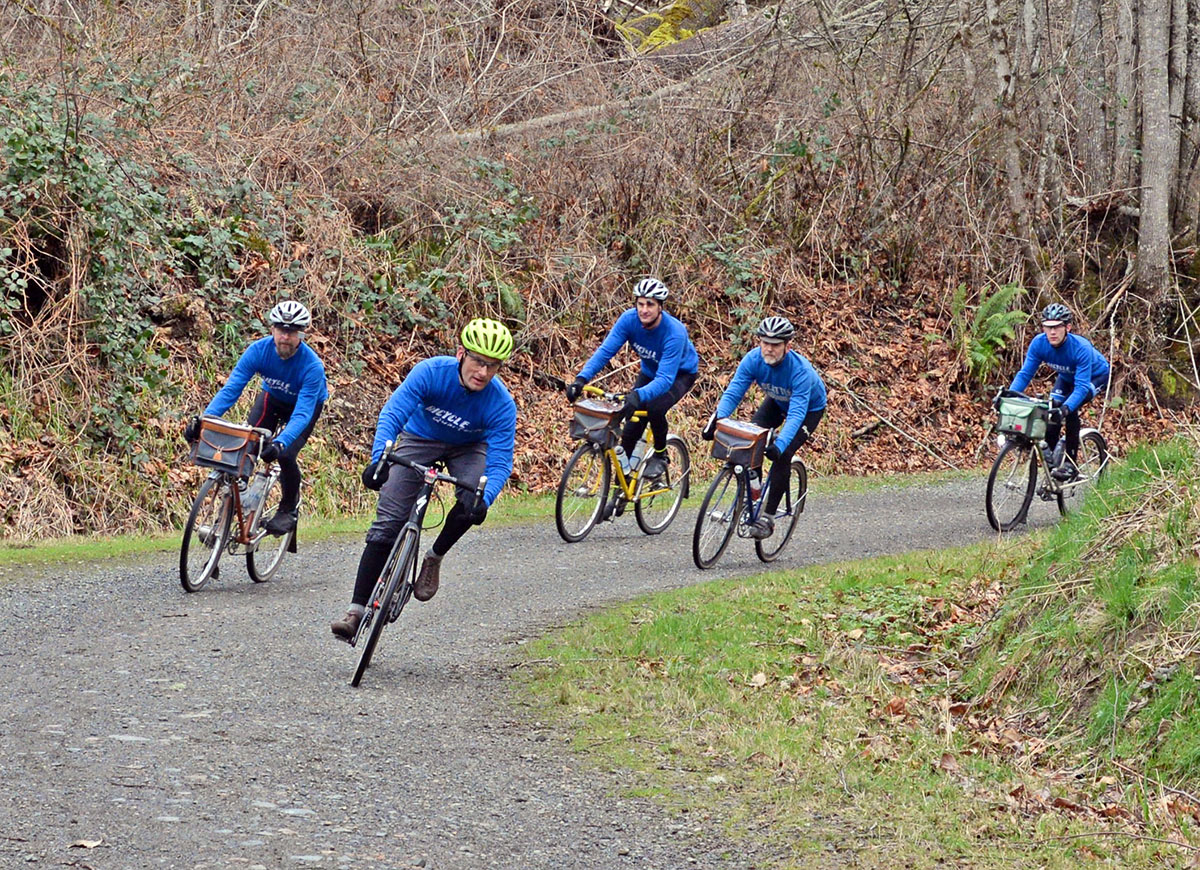
Brakes
On gravel, your braking power is limited by the lack of friction between tire and road. You can only brake until your tires start sliding. This means that absolute brake power is less important, but modulation is key.
On gravel, you often need to keep your wheels right at the lockup point to slow down for a corner. You need brakes that provide good feel and feedback. Many modern disc brakes are still lacking in that respect. At Bicycle Quarterly, we have found classic centerpull brakes to be so excellent that we re-introduced them through our sister company, Compass Bicycles.

Fenders
Most gravel bikes don’t come with fenders. It’s really a shame! Fenders will keep you and your bike much cleaner than Hahn in the photo above. Gravel roads remain muddy long after paved roads have dried out. And even the most beautiful ride can be miserable, if you are getting coated with mud.
Why don’t bike makers install fenders on their gravel bikes? Unfortunately, most commonly available fenders will not withstand the vibrations of gravel roads for long. There are alternatives: Well-mounted, high-quality aluminum fenders, like the Honjos on our bikes, will last as long as the bikes they are mounted on.
Make sure that your fenders have adequate clearances around your tires. Ideally, you want 20 mm on top of the tire, so that gravel picked up by the tires doesn’t grind against the fender. If you hear constant “Scrrrshh” sounds, your fenders are too tight. This isn’t just a cosmetic problem: Debris can collapse your front fender, jam it into the fork crown, and send you over the bars. Don’t use fenders that are sub-optimal! When in doubt, it’s better to get muddy than to risk injury.

Pedals/Shoes
Walkable shoes are useful. On gravel roads, you may have to carry your bike across small washouts or landslides. Sometimes, it’s easier and more efficient to hike up very steep passages. Use a pedal system with cleats that don’t get mashed up when you walk across gravel. SPD pedals have proven themselves in this environment. Others use touring shoes or even light hiking boots with traditional pedals and toeclips.
Prevent Mechanicals
On gravel, your bike inevitably vibrates more than it does on pavement. Make sure that all your bolts are tight. Check that straps and other parts don’t rub through. During the 360-mile Oregon Outback, the spare spokes that I had taped to my fender stays rubbed through two layers cloth tape until they fell off! The faster you go, the higher the vibration frequencies, and the more you demand of your bike.
It is possible to design and build a bike that can withstand thousands of miles of gravel riding without requiring maintenance or tightening of bolts. The lost spokes were the only problem I encountered during that epic trek across Oregon. (Below is my bike after the race.)
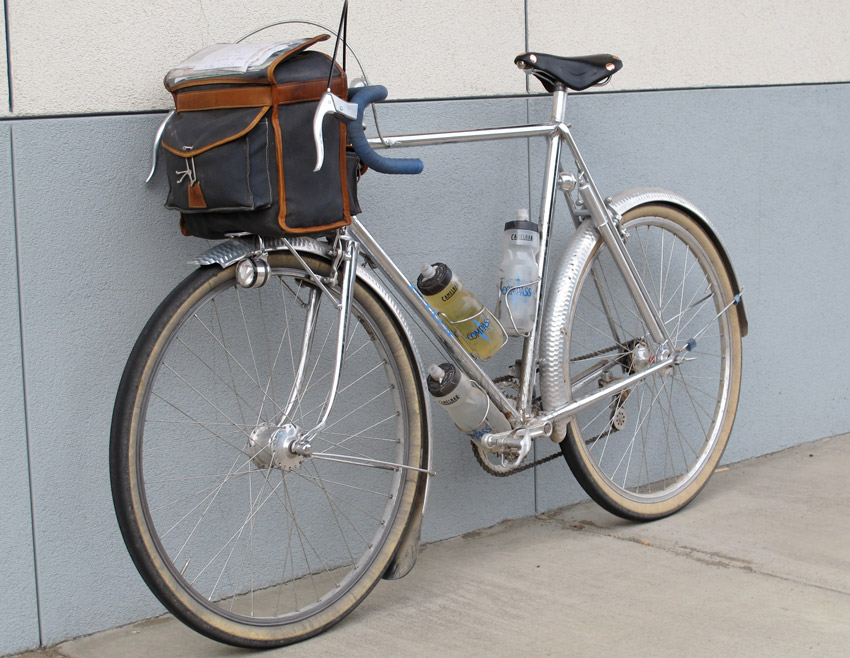
What to Carry?
Gravel riding takes you into remote places. Don’t count on getting outside help – you’ll often be out of cell phone range. Make sure your bike is reliable, and carry a few essentials.
Be prepared for flat tires. Carry two spare tubes and also a patch kit, in the unlikely case that you have more than two flats. Bring a pump, and not a CO2 inflator. (You may need to inflate multiple tires.) A spare tire is useful if you slice your tire. (Or bring a piece of tire casing that makes an excellent boot – much better than the stuff you can buy for this purpose.) When I carry a spare, I bring a narrower, lighter tire than I usually use – it’s only intended to get me home…
Obviously, a few wrenches, for the bolts that are most likely to loosen, should be in your tool kit. If you ride with friends on similar bikes, you can pool your spares. For example, one spare tire will suffice for the group if all use the same wheel size…
Bring water and food, plus clothing for all expected weather conditions: Be prepared for hot climbs, cold descents, and everything in between. Use a layering system that packs small. Your bike should have the capacity to carry that luggage. Backpacks are a last resort: They tend to be uncomfortable during long rides.
A good gravel bike will have lights, so you aren’t stranded if you get lost and have to ride after dark. Bring a small emergency blanket and a small first aid kit, just in case.
With these precautions, you’ll be able to enjoy gravel roads with little worry. Riding off the beaten path is quite safe. The biggest danger for cyclists, drunk drivers, are rarely found on twisting gravel roads in the mountains. In the unlikely event that your bike breaks and you cannot continue, you’ll hike back to civilization. That might be uncomfortable, but not dangerous. And on many gravel roads, you’ll still encounter a car or truck every few hours.
And during events like the Eroica, you can experience gravel riding without the need to be self-sufficient. It’s a great way to get a taste of gravel riding, before heading out on your own or with friends.
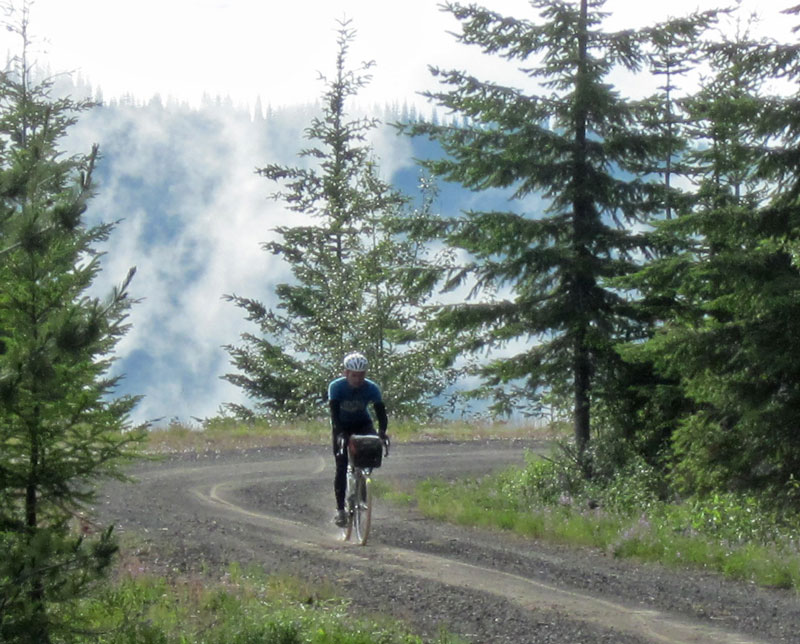
If you don’t have a perfect bike, don’t let that keep you from enjoying riding on those unpaved roads. If all you have is a hybrid, make sure it’s in good shape, maybe put on new tires, pack your gear in a backpack, and head out. It’s good to be prepared, but once you are out there, don’t worry and enjoy the ride!
More information:
- Bicycle Quarterly, the Magazine about the Passion of Cycling.
- Eroica California, the ride for classic bikes on gravel roads near Paso Robles on April 10-12, 2016.


